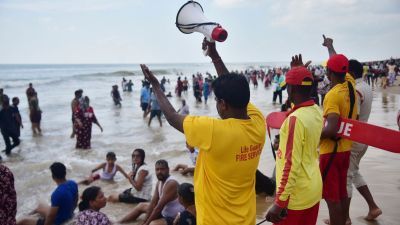In valley of death, militants walk into a school, shoot teache
LETTIR (PULWAMA), MAY 6: Five gunshots and a death have changed everything here. Fear rules Lettir now. Two bearded gun-wielding teenagers...

LETTIR (PULWAMA), MAY 6: Five gunshots and a death have changed everything here. Fear rules Lettir now. Two bearded gun-wielding teenagers had visited the local Government Middle School and shot dead a teacher in front of 200 students. The school is closed but the doors and windows are lying open.
The children assemble outside but do not dare to go inside.
“We have not been able to sleep for the last three days. As soon as my daughter closes her eyes, she starts crying frantically,” said Mohammad Maqbool. His six-year-old daughter, Naseema has seen her teacher, Ghulam Hassan Mir, dying. Most of the children who were eyewitness to this murder get nightmares of the incident.
Mir had been teaching a joint class of around 150 students — from nursery to Class IV — in the compound of the school when two phiran-clad young men entered the campus. “We were only two teachers in the school as all others had gone on census duty. So we had divided the children into two groups. I was teaching inside while he had preferred to be out, with the students, as it was a pleasant sunny day,” said Mohammad Yousuf Zargar, Mir’s colleague.
“It was 11.15am. I had just finished my class and had come out when two youngsters with Kalashnikov rifles stepped into the school ground,” he recollected. “They were strangers to both of us. They first asked for the headmaster and then for directions to an adjoining village. They then asked our names and Mir Sahib invited them for a cup of tea. As soon as I walked towards the school building to fetch the tea, I heard firing behind me. I looked back and saw both the gunmen showering bullets into him,” Zargar said. “The children were screaming and running to hide as the gunmen fled firing in air. I saw a pool of blood around the chair on which Mir Sahib was sitting. After that I don’t know anything. I had fallen unconscious”.
The children are so worried about Zargar that they accompany him everywhere in the village. Shariefa, 13, along with dozens of others were literally guarding the teacher while he had gone inside the mosque for prayers. “They have been with me since the incident. They are terrified that the killers may return for me,” Zargar said.
Nobody here wants to talk about the two killers. Even the relatives and family members of the deceased avoid speaking about them. “Keeping our mouths shut is the best policy here,” said Abdul Majeed Bhat, brother-in-law of the slain teacher. This has not been the first such killing. In the last few years the militants killed the father-son National Conference (NC) legislators Ghulam Qadir Nilura and Nazir Ahmad Nilura, Congress leader Gulshan Qadri, civil contractors Ghulam Hassan Malik and NC activist Mohammad Abdullah Rather. They even killed a 12-year-old boy, Mohammad Abbas Mir accusing him of being an Army informer.
Mir had two wives and ten children, including six daughters. Six of them are studying in the same school. “We have left it to God. What can we do now? Our lives are shattered for ever,” said Muzzafar Hassan, who studies in Aligarh Muslim University and had returned home only a day before the killing of his father.
What was the provocation for this murder? What have they gained by killing a school teacher, and that too in front of minor students? Persistent inquiries did, however, expose the motive. “Gun is being used even to settle scores in village politics. A bit of animosity can take lives now,” said a village elder among the mourners. “Mir Sahib had constructed a nice house with a brick fence, his two sons were in college, he had bought a Maruti recently. Basically he was doing well and was emerging as a respected figure in the area. That cost him his life,” he said.
Mir’s killing is not an isolated incident in the valley of death. It exposes the tragedy of Kashmir where violence is fast becoming an end in itself rather than a means to an end.





- 01
- 02
- 03
- 04
- 05


























